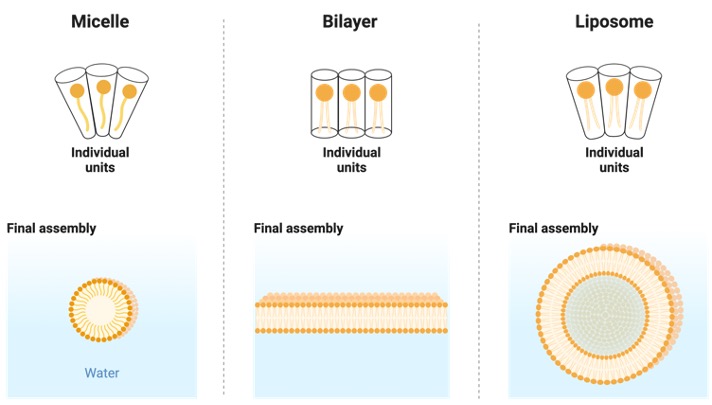Table of Contents
Fatty Acids Definition
They comprise storage lipids that are solid at room temperature and are found in animal tissues. Fat is the type of lipid known as triglycerides. Lipids and fats do not refer to the same organic compound. Lipids comprise a waxy or fatty compound that is not soluble in polar solvents like water but rather is readily soluble in a nonpolar solvent like ether.
Lipids are a broad category and comprise of different types like glycerol, sphingolipid, lipid, fatty acids, glycerophospholipid, and sterol lipids. Fats are also one category of lipids. Not all lipids are fats, while all fats are lipids. For instance, oil is a lipid but is not fat as it is not solid at room temperature. This is due to its constitution as it consists of unsaturated short fatty acid chains.
What are Fatty Acids?
Fatty acid monomers make up fats along with glycerol. A fatty acid is described as a long hydrocarbon chain that has an aliphatic tail and a carboxylic group. Due to its structure fats are categorized under hydrocarbons. As fats are also lipids they are only soluble in organic solvents as they are hydrophobic.

Fat can be categorized based on covalent bonds into 2: saturated fatty acids and unsaturated fatty acids. The fatty acid part of this organic molecule is saturated that does not contain unsaturated bonds. Due to this, they are unable to absorb any more hydrogen atoms.
Fats usually consist of long-chain saturated hydrocarbon chains due to which they are solid at room temperature. Van der Waals forces are responsible for intermolecular attractions in the long saturated fatty acids. Due to these attractions they are held closely in a packed arrangement and are solid at room temperature.
The fatty acid chain varies in terms of length in a fat molecule. Based on this they can be classified into short-chain fatty acids and long-chain fatty acids. Short-chain fatty acids consist of 5 or fewer carbons in their aliphatic tail, while long-chain fatty acids comprise 13-21 carbons in their aliphatic tail.
The case of medium-chain fatty acids has an aliphatic tail of 6-12 carbons. Glycerated fatty acid chains comprise fat molecules of varying lengths. Dietary fats comprise fatty chains of medium to the longer length. For example, Lard is a long hydrocarbon organic molecule where the chain is 17 carbons long.
Fatty Acids Examples
Phospholipids, cholesterol, and triglycerides are examples of fats. Cholesterol forms a component of the cell membrane and affects the fluidity of the membrane. It is a modified steroid biosynthesized in animal cells. It is due to the structural integrity provided by cholesterol that animal cells do not require a cell wall. As they help to alter the fluidity, they make animal cells more flexible.
Phospholipids are structural components of a biological membrane that form a lipid bilayer. They are comprised of glycerol bound to a phosphate group and 2 fatty acid chains. For example, sphingomyelins, phosphatidylethanolamine, lecithin, and phosphatidylinositol are some examples of phospholipids.
Triglycerides are formed by 3 fatty acids attached to a glycerol molecule via ester bonds. Structurally this resembles the E letter. They provide sources of energy and are reserved in adipose tissues, they are also found in heart muscle and bloodstream.
Essential fatty acids (EFAs) are crucial as they need to be ingested in diet and cannot be synthesized in the body. For example, dietary fats. Omega-3 fatty acid alpha-linolenic acid and omega-6 fatty acid linoleic acid are important EFAs.
Fatty acids are components of fat and form them through dehydration synthesis with the help of ester bonds. Fatty acids are esters as the process involved is esterification. The simplest fatty acids Triglyceride forms when the –OH group of the glycerol attaches with three chains of fatty acid and there is the release of water in the process.
Fats after being ingested are broken down into glycerol and fatty acids through hydrolysis. The degradation of dietary fats occurs in presence of the enzyme lipases that are produced pancreas, in humans.
Biological Importance of Fatty Acids
Fats on oxidation release an enormous amount of energy and is thus an important energy source that can be acquired from the diet. Lipids EFAs, can not be synthesized in the body and are derived from the diet. Therefore, fats are both an important energy source and an essential nutrient.
They contain double the energy of carbohydrates and are stored as reserves in adipose tissues. It is also more energy-dense than carbohydrates. Adipose tissue provides insulation that helps in temperature regulation and also acts as a cushion protecting against any trauma.
The skeletal and heart muscles derive their energy from fats releasing fatty acids and glycerol. Glycerol is further processed and converted into glucose in the liver. The adipose tissue containing stored fats provides cushion and insulation.
Fatty Acids Citations
- The Various Roles of Fatty Acids. Molecules . 2018 Oct 9;23(10):2583.
- Obesity, Inflammation, Toll-Like Receptor 4 and Fatty Acids. Nutrients . 2018 Mar 30;10(4):432.
- The importance of the ratio of omega-6/omega-3 essential fatty acids. Biomed Pharmacother . 2002 Oct;56(8):365-79.
- Figures are created with BioRender.com







